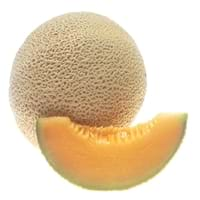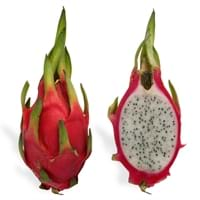Health Benefits
Cancer prevention, Heart care, Improves eye vision, Prevents diabetes, Reduces stress
Anti-oxidant properties, Anti-aging benefits, Maintains healthy cholesterol level, Weight loss properties
General Benefits
Boosts immune system, Cures cough, Cures fever, Digestive aid, Eye care, Helps in weight loss
Helps in weight loss, Suppresses Arthritis
Skin Benefits
Anti-aging benefits, Hydrates skin, Skin rejuvenation, Treatment of skin diseases
Anti-aging benefits, Heals sunburn, Treatment of acne
Hair Benefits
Good conditioner, Prevents hair loss, Protects hair
Treatment of colored hair
Allergy Symptoms
Abdominal pains, Anaphylaxis, Breathing difficulty, Diarrhea, Dizziness, Hives, Itching of mouth, Nasal congestion, Nausea, Vomiting
NA
Side Effects
Allergic reaction, Bloating, Indigestion
NA
Lactating Women
Yes
Not Available
Best Time to Eat
As a snack in the late afternoon, Don't consume at night and before bed, Eat the fresh ones, avoid mixing with any other foods, don't eat after meal., Morning time (before lunch)
Any time except an hour after meal, Don't consume at night and before bed
Vitamin A (Retinol)
Not Available
Vitamin B5 (Pantothenic Acid)
Not Available
Vitamin B6 (Pyridoxin)
Not Available
Vitamin B9 (Folic acid)
Not Available
Vitamin C (Ascorbic Acid)
Vitamin E (Tocopherole)
Not Available
Vitamin K (Phyllochinone)
Not Available
Lutein+Zeaxanthin
Not Available
Phytosterol
Not Available
Calories in Fresh Fruit with Peel
Not Available
Calories in Fresh Fruit without Peel
Not Available
Calories in Frozen Form
Not Available
Calories in Dried Form
Not Available
Calories in Canned Form
Not Available
Not Available
Calories in Pie
Not Available
Type
Melon
Berry, Citrus, Fruit vegetable, Melon, Tree fruit, Tropical
Season
Summer
Early fall, Summer
Varieties
Hales Best Jumbo, Sweet 'N Early Hybrid, Hearts of Gold, Ambrosia, Athena, Honey Bun Hybrid, Fastbreak and Superstar
Selenicereus megalanthus and Hylocereus polyrhizus
Color
Orange
Magenta, Pink
Inside Color
Creamy Orange
White
Taste
Juicy, Musky, Sweet
Bland
Origin
Africa, India
Central America, Mexico
Climatic Conditions
Dry, Hot
NA
Facts about
- Cantaloupe is known as rock-melon in some parts of the world.
- Christopher columbus first introduced cantaloupes to north america in 1494.
- The name 'Cantaloupe' as it is cultivated in papal gardens of cantaloupes, Italy.
NA
Other Countries
Iran, Romania, Turkey, United States of America
NA
Top Importer
United States of America
China
Top Exporter
Spain
Vietnam
Botanical Name
Cucumis melo var. cantalupensis
Hylocereus undatus
Synonym
Cucumis melo var. reticulatus
Pitaya, Red Pitahaya, Night blooming Cereus, Strawberry Pear, Belle of the Night, Conderella plant
Subkingdom
Tracheobionta
Tracheobionta
Division
Magnoliophyta
NA
Class
Magnoliopsida
Not Available
Subclass
Dillenhidae
Liliidae
Order
Cucurbitales
Caryophyllales
Family
Cucurbitaceae
Cactaceae
Species
C. melo
H. undatus
Generic Group
Gourd
Cactus
Difference Between Cantaloupe and Dragonfruit
We might think that Cantaloupe and Dragonfruit are similar with respect to nutritional value and health benefits. But the nutrient content of both fruits is different. Cantaloupe and Dragonfruit Facts such as their taste, shape, color, and size are also distinct. The difference between Cantaloupe and Dragonfruit is explained here.
The amount of calories in 100 gm of fresh Cantaloupe and Dragonfruit with peel is Not Available and 60.00 kcal and the amount of calories without peel is 34.00 kcal and Not Available respectively. Thus, Cantaloupe and Dragonfruit belong to Low Calorie Fruits and Low Calorie Fruits category.These fruits might or might not differ with respect to their scientific classification. The order of Cantaloupe and Dragonfruit is Cucurbitales and Caryophyllales respectively. Cantaloupe belongs to Cucurbitaceae family and Dragonfruit belongs to Cactaceae family. Cantaloupe belongs to Cucumis genus of C. melo species and Dragonfruit belongs to Hylocereus genus of H. undatus species. Beings plants, both fruits belong to Plantae Kingdom.









